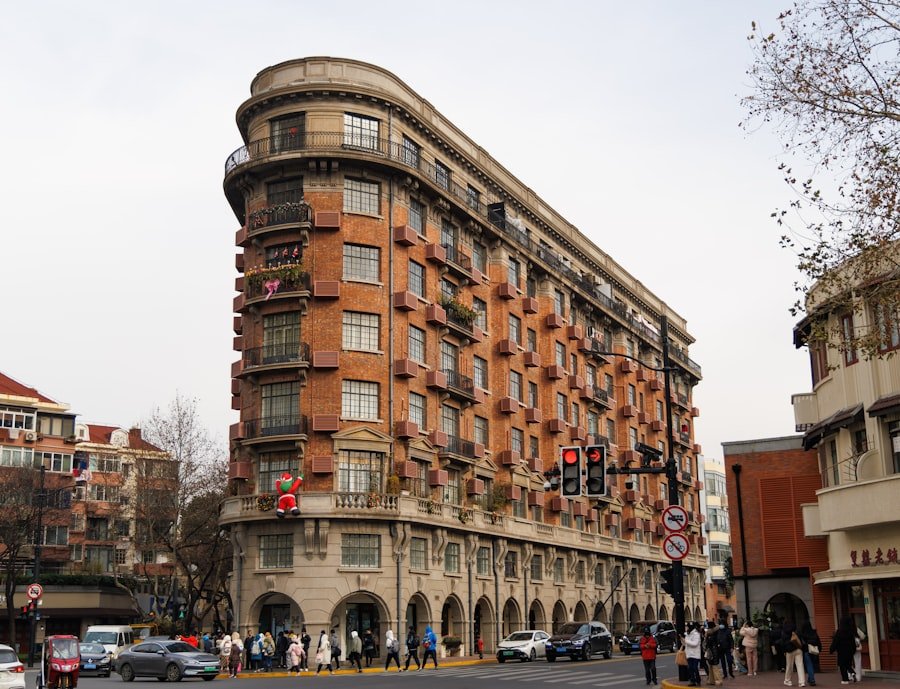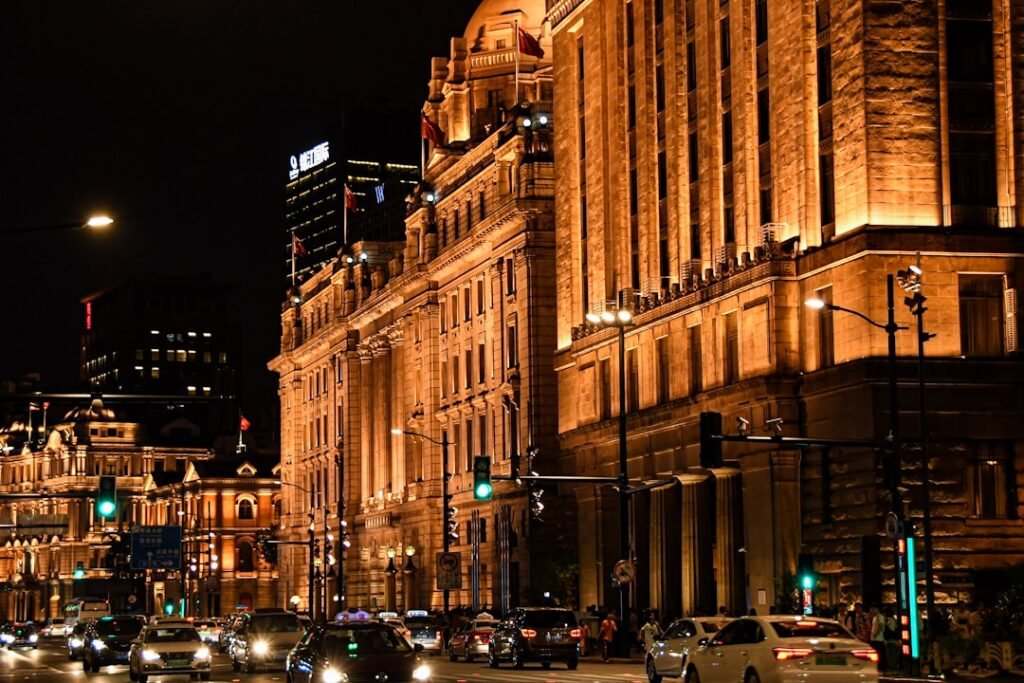In the rich tapestry of Mandarin Chinese, the expression V + 上去 (shàngqù) holds a significant place, particularly in the realm of describing actions and changes. The character 上 (shàng) translates to “up” or “above,” while 去 (qù) means “to go.” When combined, they create a dynamic expression that conveys movement towards an elevated state or position. This construction is not merely a physical descriptor; it encapsulates a range of meanings that can be applied to various contexts, including physical actions, changes in appearance, and even improvements in one’s condition or state.
Understanding the nuances of 上去 (shàngqù) is essential for anyone looking to master Mandarin. It serves as a bridge between the literal and metaphorical, allowing speakers to articulate not just what is happening in a physical sense but also how those actions relate to broader themes of growth and enhancement. As we delve deeper into this expression, we will explore its multifaceted applications, particularly in describing changes in appearance and improvements in one’s overall state. The LC Chinese School in Oslo now offers comprehensive Chinese courses for all levels, from beginner to advanced.
Table of Contents
ToggleSummary
- 上去 (shàngqù) is a Mandarin Chinese expression used to describe physical actions, movements, changes in appearance, and improvement or enhancement in appearance.
- It can be used to describe physical actions and movements such as walking, running, jumping, or climbing.
- 上去 (shàngqù) can also be used to describe changes in appearance, such as someone’s hair being tied up or someone’s face turning red.
- When used to express improvement or enhancement in appearance, 上去 (shàngqù) can be used to describe someone looking better or more attractive.
- It is important to understand the nuances and different contexts in which 上去 (shàngqù) is used in Mandarin Chinese to use it accurately and effectively.
Understanding the meaning and usage of 上去 (shàngqù) in Mandarin Chinese
At its core, 上去 (shàngqù) conveys a sense of upward movement or progression. This can be interpreted both literally and figuratively. For instance, when one says “走上去” (zǒu shàngqù), it translates to “walk up,” indicating a physical ascent.
However, the expression can also imply a transition to a better state or condition. In this way, 上去 (shàngqù) becomes a versatile tool in the Mandarin lexicon, allowing speakers to express not only physical actions but also emotional or situational improvements. The usage of 上去 (shàngqù) extends beyond mere physicality.
It can be employed in various contexts, such as discussing personal growth or advancements in skills. For example, one might say “他的中文水平上去了” (tā de zhōngwén shuǐpíng shàngqù), meaning “his Chinese proficiency has improved.” This illustrates how the expression encapsulates both the idea of moving upwards and the notion of enhancement, making it an invaluable part of conversational Mandarin.
Using 上去 (shàngqù) to describe physical actions and movements

When it comes to describing physical actions, 上去 (shàngqù) is particularly effective in conveying a sense of directionality and purpose. For instance, if someone is climbing stairs, one might say “他爬上去” (tā pá shàngqù), which translates to “he climbs up.” This straightforward application highlights the upward movement associated with the verb and reinforces the idea of progression. Moreover, 上去 (shàngqù) can also be used in more complex scenarios involving multiple actions.
For example, one might say “她走上去,然后跳下去” (tā zǒu shàngqù, ránhòu tiàojià qù), meaning “she walks up and then jumps down.” Here, the expression not only indicates movement but also sets the stage for subsequent actions, showcasing its versatility in narrative contexts. This ability to weave together various actions makes 上去 (shàngqù) an essential component of descriptive language in Mandarin.
Describing changes in appearance with 上去 (shàngqù)
In addition to its physical connotations, 上去 (shàngqù) is frequently employed to describe changes in appearance. This usage often reflects a transformation that is perceived as positive or desirable. For instance, one might say “她的皮肤变得光滑上去了” (tā de pífū biàn dé guānghuá shàngqù), which translates to “her skin has become smoother.” In this context, the expression captures not only the change itself but also an implied improvement in quality.
The application of 上去 (shàngqù) in describing appearance can extend to various aspects, including fashion and style. For example, one could say “他的衣服穿上去很合适” (tā de yīfú chuān shàngqù hěn héshì), meaning “his clothes fit well when worn.” This highlights how the expression can be used to convey a sense of suitability or enhancement in one’s appearance, further emphasising its versatility.
Using 上去 (shàngqù) to express improvement or enhancement in appearance
The notion of improvement is central to the usage of 上去 (shàngqù) when discussing appearance. It serves as a linguistic marker for positive change, allowing speakers to articulate enhancements in various contexts. For instance, one might say “她的发型上去了很多” (tā de fàxíng shàngqù hěn duō), which translates to “her hairstyle has improved significantly.” This expression not only indicates a change but also suggests that the change is favourable.
Furthermore, 上去 (shàngqù) can be used to express subjective opinions about someone’s appearance. For example, one could say “他最近看起来上去了很多” (tā zuìjìn kàn qǐlái shàngqù hěn duō), meaning “he looks much better recently.” This usage highlights how the expression can convey personal perceptions of improvement, making it a valuable tool for social interactions and compliments.
Exploring the nuances of 上去 (shàngqù) in different contexts

The nuances of 上去 (shàngqù) become particularly evident when examining its application across different contexts. While it primarily denotes upward movement or improvement, the specific implications can vary based on the situation. For instance, in a professional setting, one might use the expression to discuss career advancements: “他的职位上去了” (tā de zhíwèi shàngqù), meaning “his position has risen.” Here, the upward movement signifies not just a change in status but also an achievement that carries weight within a professional context.
Conversely, in casual conversations among friends, 上去 (shàngqù) may take on a more light-hearted tone. For example, if someone has recently adopted a healthier lifestyle, one might say “他的体重上去了” (tā de tǐzhòng shàngqù), which translates to “his weight has gone up.” In this case, while the expression still denotes change, it may carry less gravity and more of an everyday connotation. This adaptability makes 上去 (shàngqù) an essential expression for navigating various social dynamics.
Common phrases and expressions using 上去 (shàngqù) for appearance
In Mandarin Chinese, there are several common phrases that incorporate 上去 (shàngqù) specifically related to appearance. These expressions often reflect societal values regarding beauty and self-improvement. For instance, phrases like “化妆上去” (huàzhuāng shàngqù), meaning “put on makeup,” highlight how individuals enhance their appearance through cosmetic means.
This phrase encapsulates both the action of applying makeup and the intended outcome of looking better. Another common expression is “打扮上去” (dǎbàn shàngqù), which translates to “dress up.” This phrase signifies not just putting on clothes but also making an effort to enhance one’s overall appearance for a specific occasion. Such expressions are integral to everyday conversations about fashion and personal grooming, showcasing how 上去 (shàngqù) functions as a marker of enhancement in social contexts.
Tips for using 上去 (shàngqù) accurately and effectively in Mandarin Chinese
To use 上去 (shàngqù) accurately and effectively in Mandarin Chinese, it is essential to consider both context and tone. Understanding when to apply this expression can significantly enhance communication clarity. For instance, when discussing physical movements or changes in appearance, ensure that the accompanying verb aligns with the intended meaning.
Using verbs that naturally pair with 上去 will create more fluid and coherent sentences. Additionally, paying attention to the emotional undertones associated with 上去 (shàngqù) can help convey the right sentiment. When discussing improvements or enhancements, using this expression with positive adjectives can amplify its impact.
For example, saying “她的笑容上去了很多” (tā de xiàoróng shàngqù hěn duō), meaning “her smile has improved significantly,” not only highlights the change but also conveys warmth and positivity.
Examples of sentences using 上去 (shàngqù) for appearance
To illustrate the practical application of 上去 (shàngqù) in describing appearance, consider these examples: 1. “他的皮肤看起来上去了很多,真是太好了!” (tā de pífū kàn qǐlái shàngqù hěn duō, zhēn shì tài hǎole!) – “His skin looks much better; it’s really great!”
2. “这件衣服穿上去显得她更加优雅。” (zhè jiàn yīfú chuān shàngqù xiǎndé tā gèngjiā yōuyǎ.) – “This dress makes her look even more elegant.” 3.
“经过几个月的锻炼,他的身材上去了很多。” (jīngguò jǐ gè yuè de duànliàn, tā de shēncái shàngqù hěn duō.) – “After months of training, his physique has improved significantly.” These examples demonstrate how 上去 (shàngqù) can be seamlessly integrated into conversations about personal appearance and improvements.
Common mistakes to avoid when using 上去 (shàngqù) in Mandarin Chinese
While using 上去 (shàngqù) can enhance communication in Mandarin Chinese, there are common pitfalls that learners should be aware of. One frequent mistake is misapplying the expression in contexts where it does not fit naturally. For instance, using it to describe downward movements would be incorrect; instead, one should use expressions like 下来 (xiàlái), which means “to come down.” Another common error involves neglecting the emotional connotations associated with 上去 (shàngqù).
When discussing improvements or changes in appearance, failing to pair it with positive descriptors can lead to misunderstandings or unintended negativity. It is crucial to ensure that the overall tone aligns with the intended message to avoid miscommunication.
Conclusion and summary of the key points for using 上去 (shàngqù) to describe appearance in Mandarin Chinese
In conclusion, the expression V + 上去 (shàngqù) serves as a powerful linguistic tool within Mandarin Chinese that encapsulates both physical movement and metaphorical improvement. Its versatility allows speakers to articulate changes in appearance effectively while conveying positive sentiments about growth and enhancement. By understanding its various applications—from describing physical actions to expressing subjective opinions about beauty—learners can enrich their conversational skills.
As we have explored throughout this article, mastering 上去 (shàngqù) involves recognising its contextual nuances and employing it accurately within sentences. By avoiding common mistakes and embracing its potential for positive expression, learners can navigate discussions about appearance with confidence and clarity. For those eager to delve deeper into Mandarin Chinese and refine their language skills further, enrolling in courses at LC Chinese School in Oslo offers an excellent opportunity for immersive learning and practice.
With dedicated instructors and a supportive environment, students can enhance their understanding of expressions like 上去 (shàngqù) while gaining valuable insights into Chinese culture and communication styles.
Ready to speak Chinese? Enroll now at the LC Chinese School.







